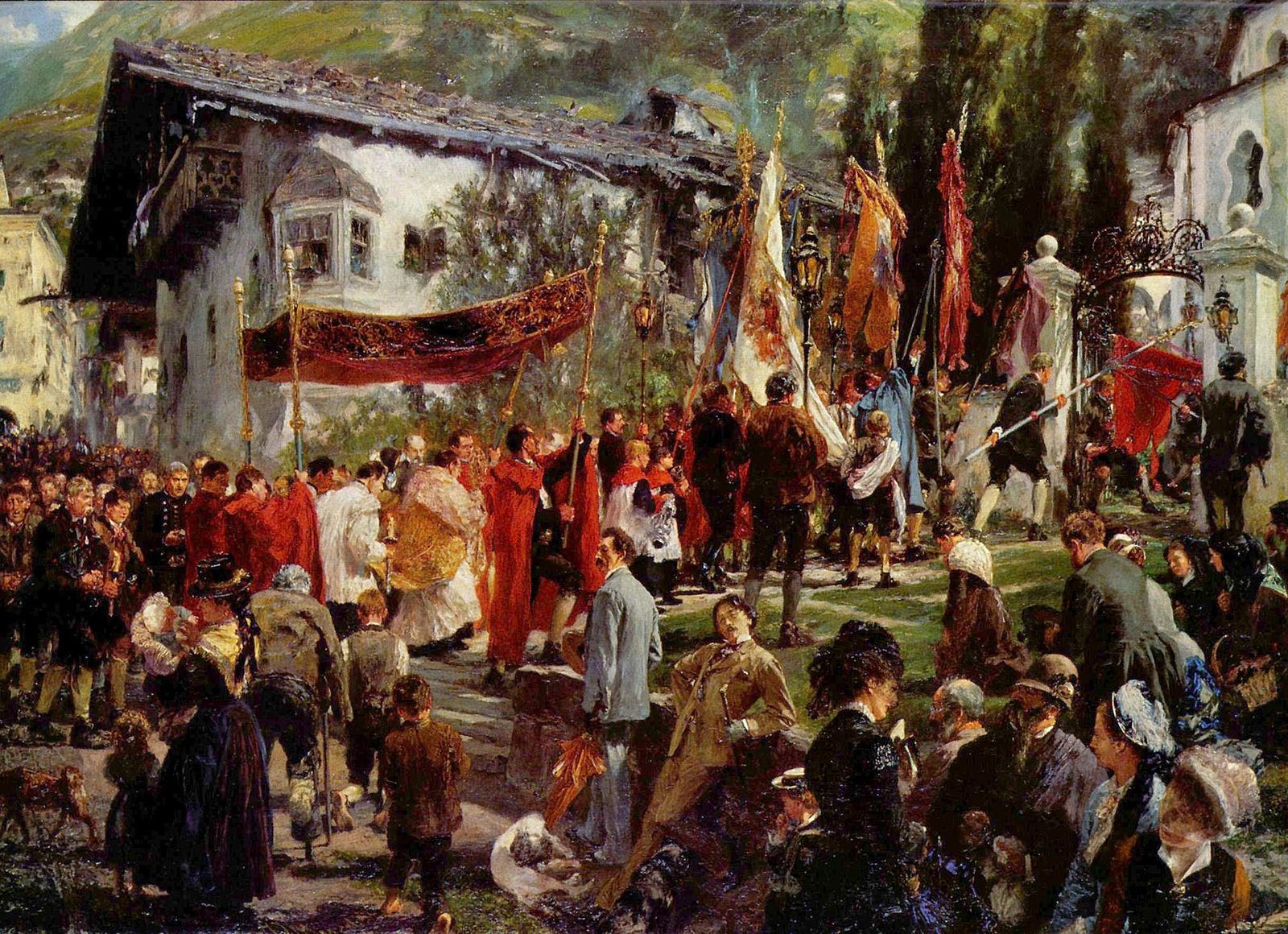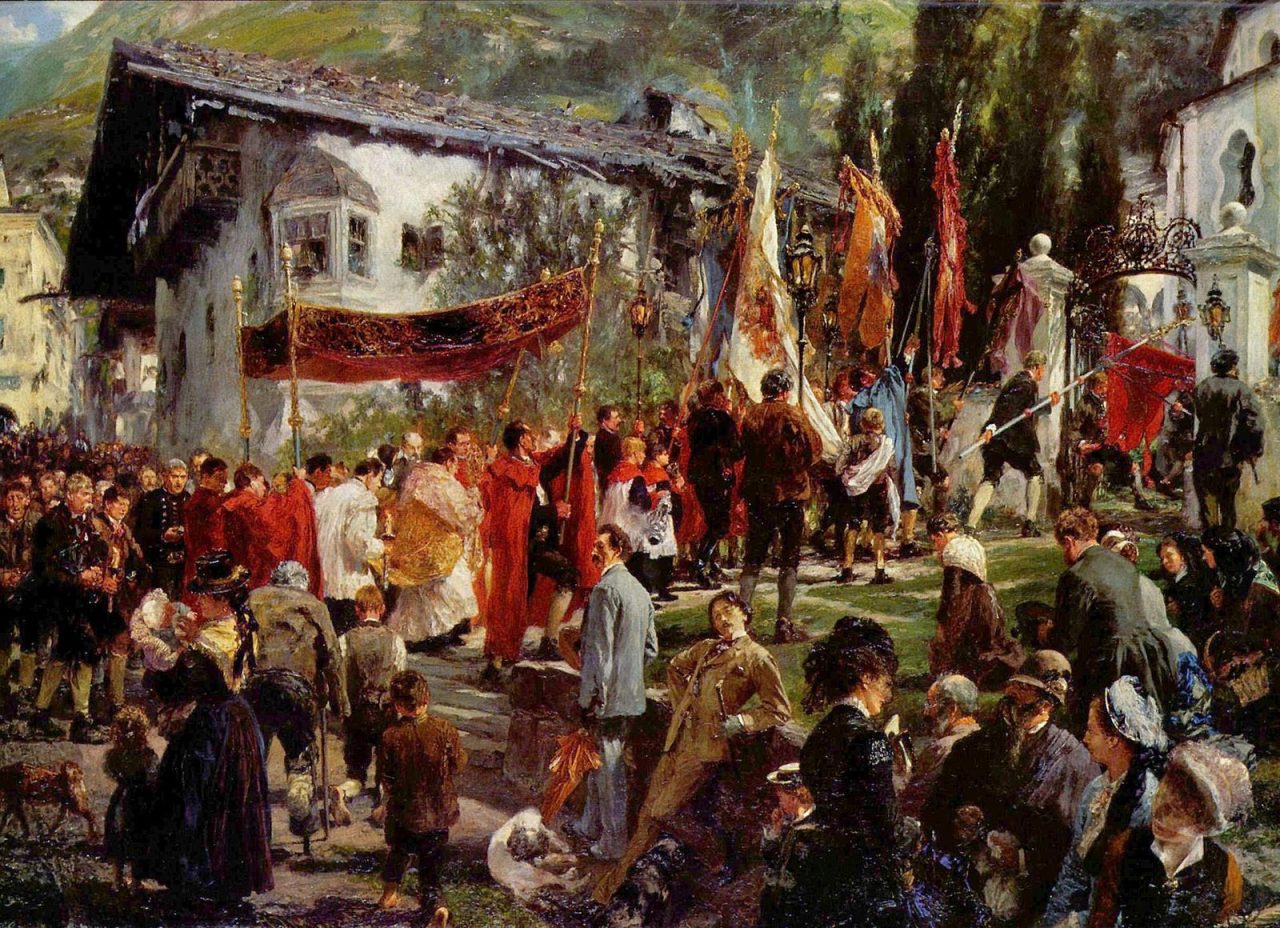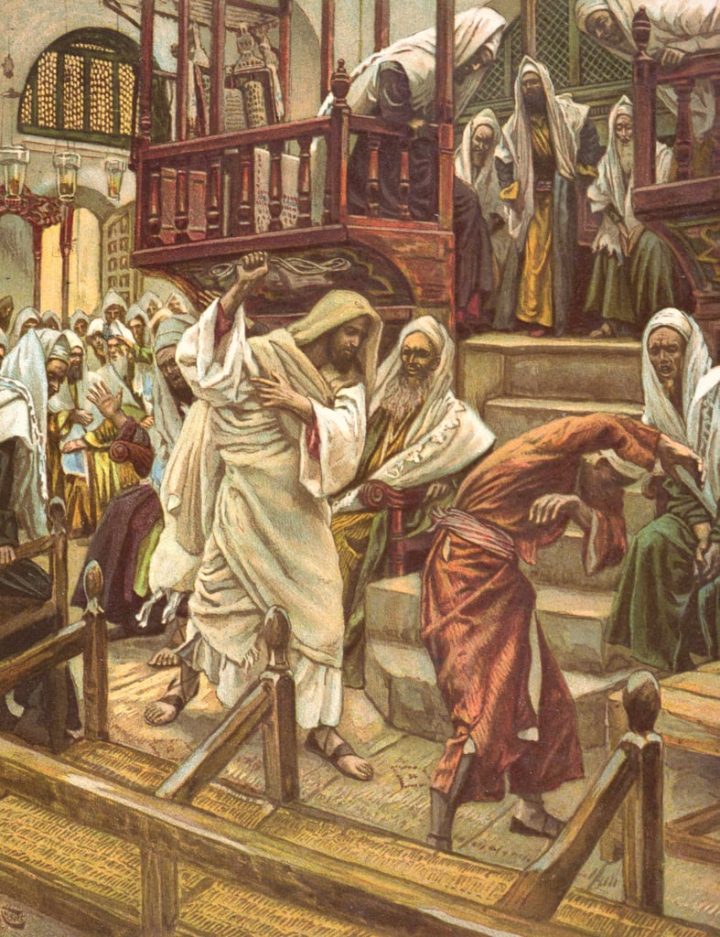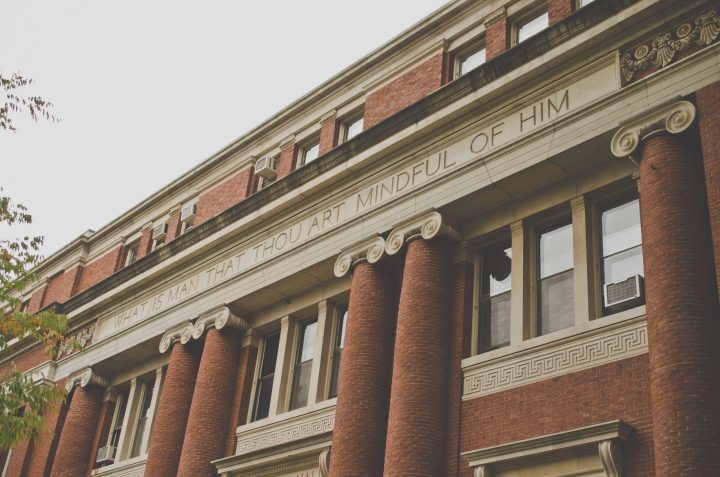
Throughout the month of June the Catholic world is graced by beautiful processions in honor of the Feast of Corpus Christi. Seeking to honor our Lord’s true presence in the Blessed Sacrament, Catholics everywhere process solemnly with the Sacrament around their cities, parishes, and communities. These processionals range from the simple affairs of small rural parishes to the lavish public spectacles seen in Malta and other European countries.
The procession is a liturgical act that has deep roots in Christianity. Besides Corpus Christi, processions have traditionally been part of Candlemas and Palm Sunday. St. Mark’s Day (April 25) was also the occasion of solemn processions in olden times. To this day, parishes that celebrate the Extraordinary Form of the Mass may be familiar with the Rogation Day processions that occur just prior to the Feast of the Ascension. Funerals, too, were an occasion of processions, which survive today in the long trains of automobiles that “process” from the funeral home to the graveyard. Also, though not termed a procession in the liturgical books, the sprinkling of Holy Water at the beginning of ever Mass can be seen as a kind of procession.
Christians have also turned to processions in extraordinary times as acts of thanksgiving or penitence. Icons of Our Lady were routinely processed around Constantinople in thanksgiving for victories on the battlefield or deliverance from heresy. The Spaniards in the Philippines made a notable procession to the shrine of Santo Domingo in Manila in 1646 in thanksgiving for deliverance from Dutch corsairs seeking to wrest the archipelago from their control. We may also recall the famous procession of 590 A.D. in Rome, held as penance beseeching God to stay the spread of a deadly pestilence (this procession was the occasion of an apparition of St. Michael upon the Mausoleum of Hadrian, after which the plague ceased, and the tomb was renamed Castel Sant’Angelo). Relics were sometimes incorporated into these penitential processions, such as the procession of the relics of St. Genevieve through Paris in 1129, which brought an end to a terrible plague that had been ravaging those parts.
Processions could also be held to beg for rain, for fair weather, against storms, to end famine, plague, or war, and also upon the occasion of the solemn translation of relics.
Where did this venerable custom originate? And what is its spiritual significance?
Processions in Christianity go all the way back to the Old Testament. We may recall God’s command to the Israelites to march in solemn procession around the walls of Jericho bearing the Ark of the Covenant, a ritual which secured that city’s downfall (Jos. 6:1-27). King David, too, processed with the Ark of the Covenant into Jerusalem (2 Sam. 6; 1 Kings 8). These Old Testament processions were intended to be acts of faith in God’s awesome power, a sacred act that was both a prayer and a gesture of adoration. Similarly, our Lord’s procession into Jerusalem on Palm Sunday was simultaneously an act of thanksgiving and adoration for the arrival of the long-promised Messiah.
Processions not only express these pious sentiments but do so in a communal way. Outside of feast days, the occasions of processions are always matters that concern the good of the community: prayers for rain, for the cessation of plague, for a good harvest, for peace, etc. Even the translation of a relic was viewed as an event of communal importance, as the tangible presence of a saint within the local church via his or her relics provided not only a focal point for the community cultus but a sign of community pride and regional identity; devotion to St. Ambrose characterized the Church of Milan just like devotion to Becket characterized the Church of Canterbury. Processions are thus expressions of communal piety.
Mystically, the procession calls to mind our status as pilgrims. All of us are journeying towards our heavenly homeland, for “here we have no lasting city, but we seek the city which is to come” (Heb. 13:14). St. John says, “It does not yet appear what we will be” (1 John 3:2), and until His glorious coming, we are all in a state of travel, moving like the Israelites through the deserts of this world towards the Promised Land. The procession signifies this spiritual journey. In the ritual movement from Point A to Point B, we see a signification of our own movement from the Vale of Tears to the beatitude of Heaven, the valley of the shadow of death to the Eternal City.
In this sense, the prayerful movement of the procession is a microcosm of how we move through life—with solemnity, piety, penance, thanksgiving, adoration, and petition. The various types of processions illustrate the universality of this spiritual movement, applicable to every circumstance in life. The communal nature reminds us that the pilgrimage towards God is meant to be the common experience of all men without distinction. The priest, at the head of the procession, calls to mind Christ, the Logos, He who guides all things by His providence, leading His people towards salvation.
One of the beauties of the Catholic faith is the way everyday actions become significations of greater truths when taken up into the time-honored rites of the Church. The ancient ritual of the procession remains a profound example of this.
Image: Corpus Christi Procession in Hofgastein, Adolf Friedrich Erdmann von Menzel, 1880. Public domain.




